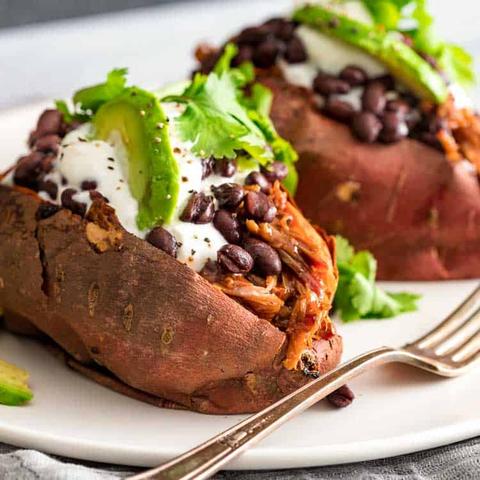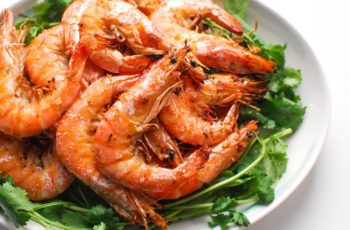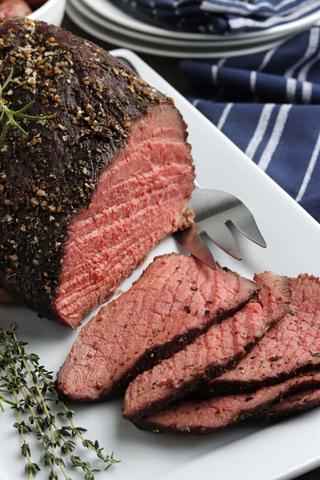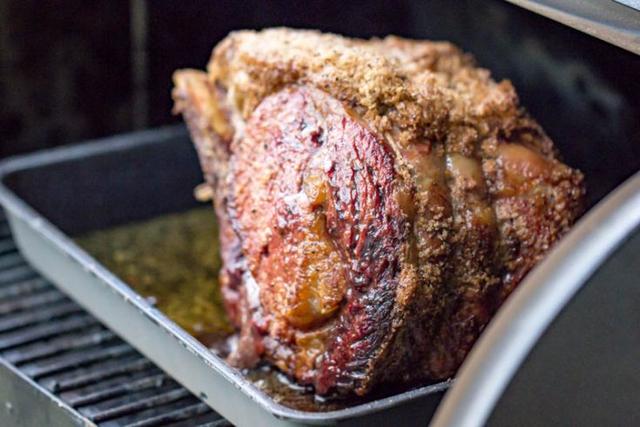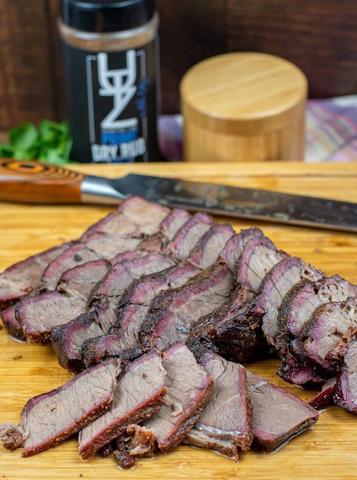
“Pork Shoulder vs Pork Butt: Unraveling the Delicious Dilemma. Confused about these popular cuts of pork? Delve into our comprehensive guide as we dissect the differences, cooking techniques, and flavor profiles of pork shoulder and pork butt. Master your meat knowledge and elevate your culinary skills with this essential comparison.”
What is a pork shoulder?

A pork shoulder, also known as a picnic shoulder or picnic roast, is the lower portion of the shoulder primal cut on a pig. It connects the pork butt to the top of the pig’s front leg. This cut of meat comes with the skin still on and is known for being lean and tough due to its hardworking nature when the pig was alive. The pork shoulder has a higher muscle-to-fat ratio, which affects how it can be cooked. It is best cooked low and slow to achieve tender results, but it should also be finished over high heat to crisp up the skin.
What is a pork butt?
A pork butt is the portion of the shoulder primal that is above the pork shoulder. It is a piece of meat with good fat marbling due to not working as hard as the lower shoulder. You can purchase a pork butt bone-in or boneless depending on your preference, but it is more commonly sold with the bone in. A bone-in Boston butt can be helpful when smoking pulled pork because you will know that the pork is ready to pull when the bone slips out of the meat without much resistance.
What is the difference between Pork Butt and Pork Shoulder?
Pork butt and pork shoulder come from the same primal cut, but they have some key differences. The pork shoulder, also known as the picnic shoulder or picnic roast, is the lower portion of the shoulder primal. It is a lean and tough piece of meat with a higher muscle-to-fat ratio. On the other hand, pork butt is the portion of the shoulder primal that is above the pork shoulder. It has good fat marbling and is more tender than pork shoulder.
Another difference between the two cuts is their shape. Pork butt is typically a rounded, fairly uniform rectangle, making it easier to cook evenly. It also has a thick fat cap on top, which helps keep the meat moist during cooking. Pork shoulder, on the other hand, is almost triangular in shape and usually comes with skin on top.
In terms of cooking methods, both cuts can be used for pulled pork but pork butt tends to be better suited for this dish due to its higher fat content and tenderness. Pork shoulder can also be smoked or braised and is ideal for recipes that aim to achieve a crispy crust. Overall, while both cuts can be used for BBQ, pork butt is often preferred for its versatility and tenderness.
Fat Marbling
The pork butt has more fat marbling than the pork shoulder. This fat marbling contributes to the tenderness and juiciness of the meat, making it ideal for pulled pork dishes. The intramuscular fat in the pork butt renders during the slow cooking process, resulting in tender and flavorful pulled pork.
Due to its higher fat content, the pork butt can withstand long cooking times and higher heat. It is often used for low and slow cooking methods, such as smoking or braising, to achieve a tender and flavorful result. On the other hand, the leaner pork shoulder requires low and slow cooking methods to ensure that it becomes tender without drying out.
While both cuts can be used for pulled pork, the pork butt is more commonly preferred due to its higher fat content and tenderness. However, both cuts have their own uses beyond pulled pork. The pork butt can be sliced into steaks for grilling or used in various other pork recipes that require braising. The pork shoulder with its skin on is perfect for recipes that aim to achieve a crispy crust or crackling.
Overall, while both cuts can be used for BBQ and pulled pork, the higher fat content and tenderness of the pork butt make it a better choice for achieving delicious and succulent pulled pork dishes.
Shape
The pork butt is typically a rounded, fairly uniform rectangle in shape, making it easier to cook. Its regular shape allows for even cooking when smoking, so you don’t have to worry about certain areas finishing before others. The pork shoulder, on the other hand, is almost triangular in shape and usually comes with the skin on top. This makes it perfect for recipes that aim to achieve a crispy crust or pork crackling.
When to use pork butt and pork shoulder
The pork butt is best for making tender pulled pork dishes. The intramuscular fat in the butt renders throughout the slow cooking process, resulting in a more tender meat that easily pulls apart into shreds. This makes it the ideal cut for traditional pulled pork recipes.
Pork shoulder, on the other hand, is leaner and requires low and slow cooking methods to achieve tenderness. It is perfect for recipes that aim to achieve a crispy crust, as well as for slicing and grilling over direct heat.
Pork butt vs pork shoulder: What is better for pulled pork?
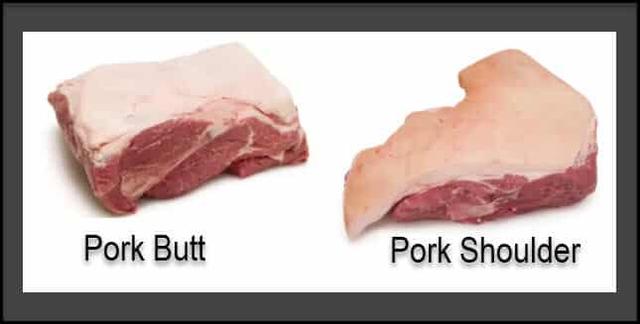
Pork butt and pork shoulder are both commonly used cuts of meat for making pulled pork, but there are some differences between the two. Pork butt, which is the upper portion of the shoulder primal, is generally considered better for making pulled pork. It has more fat marbling, which helps to keep the meat moist and tender during the slow cooking process. The intramuscular fat in the butt also renders throughout cooking, giving the pork a rich and flavorful taste.
On the other hand, pork shoulder, also known as picnic shoulder or picnic roast, is leaner than pork butt due to its hardworking nature. It has a higher muscle-to-fat ratio and can be tougher if not cooked properly. However, with low and slow cooking methods, it can still be used to make delicious pulled pork.
In summary, while both cuts can be used to make pulled pork, pork butt is generally considered better due to its higher fat content and tenderness when cooked slowly.
How to make pulled pork with pork butt
To make pulled pork with pork butt, start by preparing the meat. Trim any excess fat from the surface of the pork butt, leaving a thin layer for flavor and moisture. Next, season the meat generously with your preferred dry rub or spice blend. You can use a simple mixture of salt, pepper, garlic powder, and paprika, or get creative with other spices like cumin, chili powder, or brown sugar.
Once the meat is seasoned, it’s time to cook it. Preheat your smoker or grill to a temperature of around 225-275°F (107-135°C). Place the pork butt on the cooking grate and close the lid. Let it smoke for several hours until it reaches an internal temperature of around 195-205°F (90-96°C). This slow cooking process will help break down the tough connective tissues in the meat and create tender, juicy pulled pork.
Once the pork butt is fully cooked and tender, remove it from the smoker or grill and let it rest for about 30 minutes. This allows the juices to redistribute throughout the meat and makes it easier to shred. Use two forks or your hands to pull apart the meat into small shreds or chunks.
At this point, you can serve the pulled pork as is or mix in your favorite barbecue sauce for added flavor. Serve on buns with coleslaw and pickles for a classic pulled pork sandwich, or use it as a topping for tacos, nachos, or loaded baked potatoes.
What is better for BBQ, Pork Butt or Pork Shoulder?
When it comes to BBQ, both pork butt and pork shoulder have their strengths. However, many BBQ enthusiasts would argue that pork butt is the superior choice for this cooking method. The higher fat content in pork butt helps to keep the meat moist and tender during the slow cooking process. The intramuscular fat in the butt also renders throughout cooking, giving it a rich and flavorful taste.
Pork shoulder, on the other hand, is leaner due to its hardworking nature. While it can still be used for BBQ and can produce delicious results, it may require more careful monitoring to prevent drying out. Additionally, pork shoulder is often preferred for recipes that aim to achieve a crispy crust, as it typically comes with the skin on.
In summary, if you want tender pulled pork with plenty of flavor, pork butt is generally considered the better choice for BBQ. However, both cuts can be used successfully depending on your preferences and cooking techniques.
BBQ Uses for Pork Butt
Pulled Pork: The pork butt is the best cut of meat for making tender and flavorful pulled pork. The intramuscular fat in the butt renders throughout the slow cooking process, resulting in a juicy and easy-to-pull-apart meat.
Pork Steaks: You can slice a pork butt into thick steaks and grill them to perfection. The fat content in the butt keeps the meat moist and adds delicious flavor.
Smoked Carnitas: By smoking a pork butt and then crisping the shredded meat in a skillet, you can create smoky carnitas perfect for tacos or nachos.
Pork Roast: The pork butt can also be used as a roast or in any pork recipe that requires braising. Its fat marbling ensures a moist and tender result.
BBQ Recipes for Pork Butt
1. Pulled Pork: The most popular and classic recipe for pork butt is pulled pork. Slow cook the pork butt with your favorite rub or marinade, then shred the meat and serve it on buns with barbecue sauce.
2. Smoked Pork Steaks: Slice the pork butt into thick steaks and season with salt, pepper, and your preferred dry rub. Smoke the steaks until they reach your desired level of tenderness and finish with barbecue sauce.
3. Smoked Carnitas: Marinate the pork butt and smoke it until cooked through. Shred the meat and crisp it in a skillet to create smoky carnitas perfect for tacos or nachos.
4. Sliced Picnic Shoulder: If you can’t find a pork butt, you can still smoke a picnic shoulder to get pulled pork or slice it to serve as a main dish. Finish over high heat to crisp up the skin.
5. Pork Belly Burnt Ends: For a unique twist on barbecue, try making pork belly burnt ends using cubed pieces of pork belly seasoned and smoked until caramelized and tender.
BBQ Uses for Pork Shoulder
Pork shoulder is a versatile cut of meat that can be used in various BBQ dishes. Here are some popular BBQ uses for pork shoulder:
1. Pulled Pork: The most common and popular use for pork shoulder in BBQ is to make pulled pork. The tender, flavorful meat of the pork shoulder lends itself perfectly to being shredded and served on sandwiches or as a main dish with barbecue sauce.
2. Pork Steaks: Another delicious way to use pork shoulder in BBQ is by slicing it into thick steaks and grilling them. The marbling of fat in the pork shoulder keeps the meat moist and adds flavor when grilled over high heat.
3. Smoked Carnitas: For a smoky twist on traditional carnitas, you can smoke a pork shoulder and then crisp the shredded meat in a skillet. This creates a delicious filling for tacos or nachos.
4. Sliced Pork Shoulder: If you prefer sliced meat rather than pulled, you can smoke a pork shoulder and then slice it to serve. This works especially well if you want to achieve crispy skin on your pork.
5. Braised Pork Recipes: Pork shoulder can also be used in various braised pork recipes, such as stews or roasts. The slow cooking process helps tenderize the tough meat and infuses it with rich flavors.
No matter how you choose to use it, pork shoulder is a fantastic cut of meat for BBQ enthusiasts looking to create mouthwatering dishes.
BBQ Pork Shoulder Recipes
1. Pulled Pork Sandwiches: Slow-cook a pork shoulder with your favorite BBQ rub until it is tender and easily shredded. Serve the pulled pork on a bun with coleslaw and your choice of BBQ sauce.
2. Smoked Pork Shoulder: Rub the pork shoulder with a mixture of salt, pepper, paprika, garlic powder, and brown sugar. Smoke the shoulder at a low temperature for several hours until it reaches an internal temperature of 195°F. Let it rest before shredding.
3. BBQ Pulled Pork Tacos: Marinate the pork shoulder in a mixture of lime juice, garlic, cumin, chili powder, and oregano overnight. Slow-cook the shoulder until it is tender and easily shredded. Serve the pulled pork in tortillas with your favorite taco toppings.
4. Hawaiian-style Kalua Pork: Rub the pork shoulder with sea salt and liquid smoke. Wrap it tightly in banana leaves or foil and roast it at a low temperature for several hours until it is fork-tender. Shred the meat and serve with steamed rice and pineapple salsa.
5. Asian-inspired Pulled Pork Bao Buns: Slow-cook the pork shoulder with soy sauce, ginger, garlic, honey, and Chinese five-spice powder until it is tender and easily shredded. Serve the pulled pork in steamed bao buns with pickled vegetables and hoisin sauce.
Final Verdict
In conclusion, both pork butt and pork shoulder can be used to make delicious pulled pork and BBQ dishes. However, there are some differences between the two cuts that may impact your cooking method and desired outcome. Pork butt, also known as Boston butt, is a more tender cut with higher fat marbling, making it ideal for slow cooking and smoking. It is versatile and can be used for pulled pork, pork steaks, or even smoked carnitas. On the other hand, pork shoulder or picnic shoulder is leaner and tougher due to its hardworking nature. It requires low and slow cooking methods to achieve tenderness but can still be used for pulled pork or sliced servings.
Ultimately, the choice between pork butt and pork shoulder depends on your personal preference and how you plan to cook the meat. If you want tender pulled pork with a higher fat content, go for the pork butt. If you prefer a leaner cut that still yields delicious results when cooked properly, opt for the pork shoulder. Regardless of your choice, both cuts offer incredible flavor and can be enjoyed in various BBQ recipes.
In conclusion, the terms “pork shoulder” and “pork butt” can be confusing as they refer to different cuts of meat. Pork shoulder is a versatile cut with more fat content, ideal for slow cooking or braising. On the other hand, pork butt is leaner and works well for pulled pork. Understanding their differences will help you choose the right cut for your desired recipe.
Learn More About Grilling
If you want to learn more about grilling, check out these other helpful resources!

